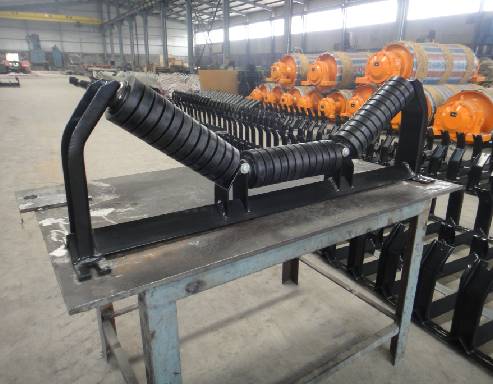 Afrikaans
Afrikaans  Albanian
Albanian  Amharic
Amharic  Arabic
Arabic  Armenian
Armenian  Azerbaijani
Azerbaijani  Basque
Basque  Belarusian
Belarusian  Bengali
Bengali  Bosnian
Bosnian  Bulgarian
Bulgarian  Catalan
Catalan  Cebuano
Cebuano  Corsican
Corsican  Croatian
Croatian  Czech
Czech  Danish
Danish  Dutch
Dutch  English
English  Esperanto
Esperanto  Estonian
Estonian  Finnish
Finnish  French
French  Frisian
Frisian  Galician
Galician  Georgian
Georgian  German
German  Greek
Greek  Gujarati
Gujarati  Haitian Creole
Haitian Creole  hausa
hausa  hawaiian
hawaiian  Hebrew
Hebrew  Hindi
Hindi  Miao
Miao  Hungarian
Hungarian  Icelandic
Icelandic  igbo
igbo  Indonesian
Indonesian  irish
irish  Italian
Italian  Japanese
Japanese  Javanese
Javanese  Kannada
Kannada  kazakh
kazakh  Khmer
Khmer  Rwandese
Rwandese  Korean
Korean  Kurdish
Kurdish  Kyrgyz
Kyrgyz  Lao
Lao  Latin
Latin  Latvian
Latvian  Lithuanian
Lithuanian  Luxembourgish
Luxembourgish  Macedonian
Macedonian  Malgashi
Malgashi  Malay
Malay  Malayalam
Malayalam  Maltese
Maltese  Maori
Maori  Marathi
Marathi  Mongolian
Mongolian  Myanmar
Myanmar  Nepali
Nepali  Norwegian
Norwegian  Norwegian
Norwegian  Occitan
Occitan  Pashto
Pashto  Persian
Persian  Polish
Polish  Portuguese
Portuguese  Punjabi
Punjabi  Romanian
Romanian  Russian
Russian  Samoan
Samoan  Scottish Gaelic
Scottish Gaelic  Serbian
Serbian  Sesotho
Sesotho  Shona
Shona  Sindhi
Sindhi  Sinhala
Sinhala  Slovak
Slovak  Slovenian
Slovenian  Somali
Somali  Spanish
Spanish  Sundanese
Sundanese  Swahili
Swahili  Swedish
Swedish  Tagalog
Tagalog  Tajik
Tajik  Tamil
Tamil  Tatar
Tatar  Telugu
Telugu  Thai
Thai  Turkish
Turkish  Turkmen
Turkmen  Ukrainian
Ukrainian  Urdu
Urdu  Uighur
Uighur  Uzbek
Uzbek  Vietnamese
Vietnamese  Welsh
Welsh  Bantu
Bantu  Yiddish
Yiddish  Yoruba
Yoruba  Zulu
Zulu Effective Designs for Conveyor Return Idlers to Enhance Material Handling Efficiency
Understanding Conveyor Return Idlers Function and Importance
In the world of material handling, conveyors play a vital role in ensuring efficient transportation of materials across various industries. Among the essential components of a conveyor system are return idlers. Despite being less visible and seemingly less significant than other parts, return idlers are crucial for the smooth operation of conveyor systems. This article delves into the function, types, and importance of conveyor return idlers.
What are Conveyor Return Idlers?
Return idlers are specific components of a conveyor system designed to support the return side of the conveyor belt. When a conveyor belt transports materials, it travels in a continuous loop between two pulleys—the drive pulley and the return pulley. As the belt carries materials, it naturally bends and flexes. Return idlers are responsible for maintaining the belt's alignment during its return journey, which is essential for ensuring optimal operation and minimizing wear and tear.
Functions of Return Idlers
1. Support and Stability Return idlers provide critical support to the conveyor belt as it moves back to the drive pulley. They ensure that the belt remains level and aligned, which is vital for both performance and longevity.
2. Minimizing Friction Properly installed return idlers help to reduce friction between the belt and the supporting structure. This is essential because excessive friction can lead to increased wear on the belt and components, potentially resulting in costly repairs and downtime.
3. Belt Tension Maintenance Return idlers contribute to maintaining the proper tension in the conveyor belt. Adequate tension is necessary for the belt to operate effectively. If the belt becomes too loose, it might slip, while excessive tension could lead to premature failure of the belt and associated components.
4. Reducing Material Accumulation By keeping the conveyor belt well-aligned, return idlers minimize the chance of materials falling off the belt during its return journey. This is particularly important in preventing dust and debris build-up, which can compromise safety and efficiency.
Types of Conveyor Return Idlers
conveyor return idlers

Return idlers come in various types, each designed to suit specific needs and operational environments
1. Flat Return Idlers The simplest type, flat return idlers consist of a cylindrical design that supports the belt as it returns. They are common in lighter applications.
2. V-Return Idlers These idlers are shaped like a V and help to manage the belt's alignment more effectively, especially in applications with steeper incline angles.
3. Trough Idlers Trough return idlers are designed with a trough shape to facilitate better containment of the belt and prevent material spillage during the return phase.
4. Rubber Coated Idlers These idlers have rubber coatings to further reduce friction and wear on both the belt and the idler itself.
Importance of Proper Maintenance
To ensure that return idlers function effectively, regular maintenance is paramount. This includes cleaning to remove any build-up of material, checking for wear and tear, and ensuring that they are correctly aligned and functioning optimally. Neglecting return idlers can lead to significant operational issues, such as belt misalignment, increased maintenance costs, and even the complete failure of the conveyor system.
Conclusion
In summary, conveyor return idlers may seem like small components in the grand scheme of conveyor systems, but their role is far from insignificant. By supporting the return journey of the conveyor belt, minimizing friction, and reducing material accumulation, return idlers contribute to the overall efficiency and longevity of the conveyor system. Understanding their importance and ensuring proper maintenance can lead to improved operational efficiency, reduced downtime, and lower maintenance costs. Therefore, industries relying on conveyor systems must prioritize the functionality and upkeep of their return idlers to maximize the overall effectiveness of their material handling efforts.
-
Revolutionizing Conveyor Reliability with Advanced Rubber Lagging PulleysNewsJul.22,2025
-
Powering Precision and Durability with Expert Manufacturers of Conveyor ComponentsNewsJul.22,2025
-
Optimizing Conveyor Systems with Advanced Conveyor AccessoriesNewsJul.22,2025
-
Maximize Conveyor Efficiency with Quality Conveyor Idler PulleysNewsJul.22,2025
-
Future-Proof Your Conveyor System with High-Performance Polyurethane RollerNewsJul.22,2025
-
Driving Efficiency Forward with Quality Idlers and RollersNewsJul.22,2025





























